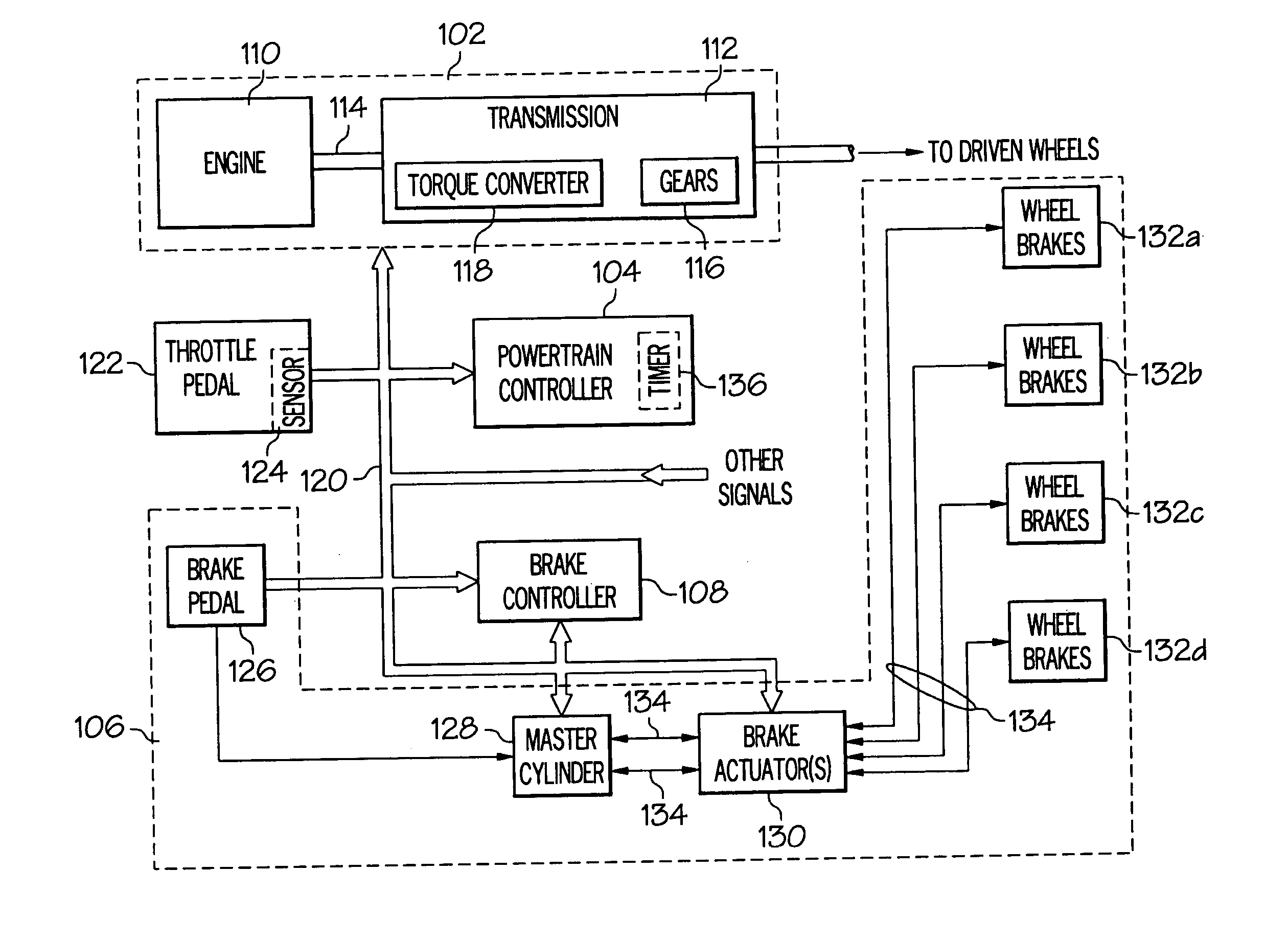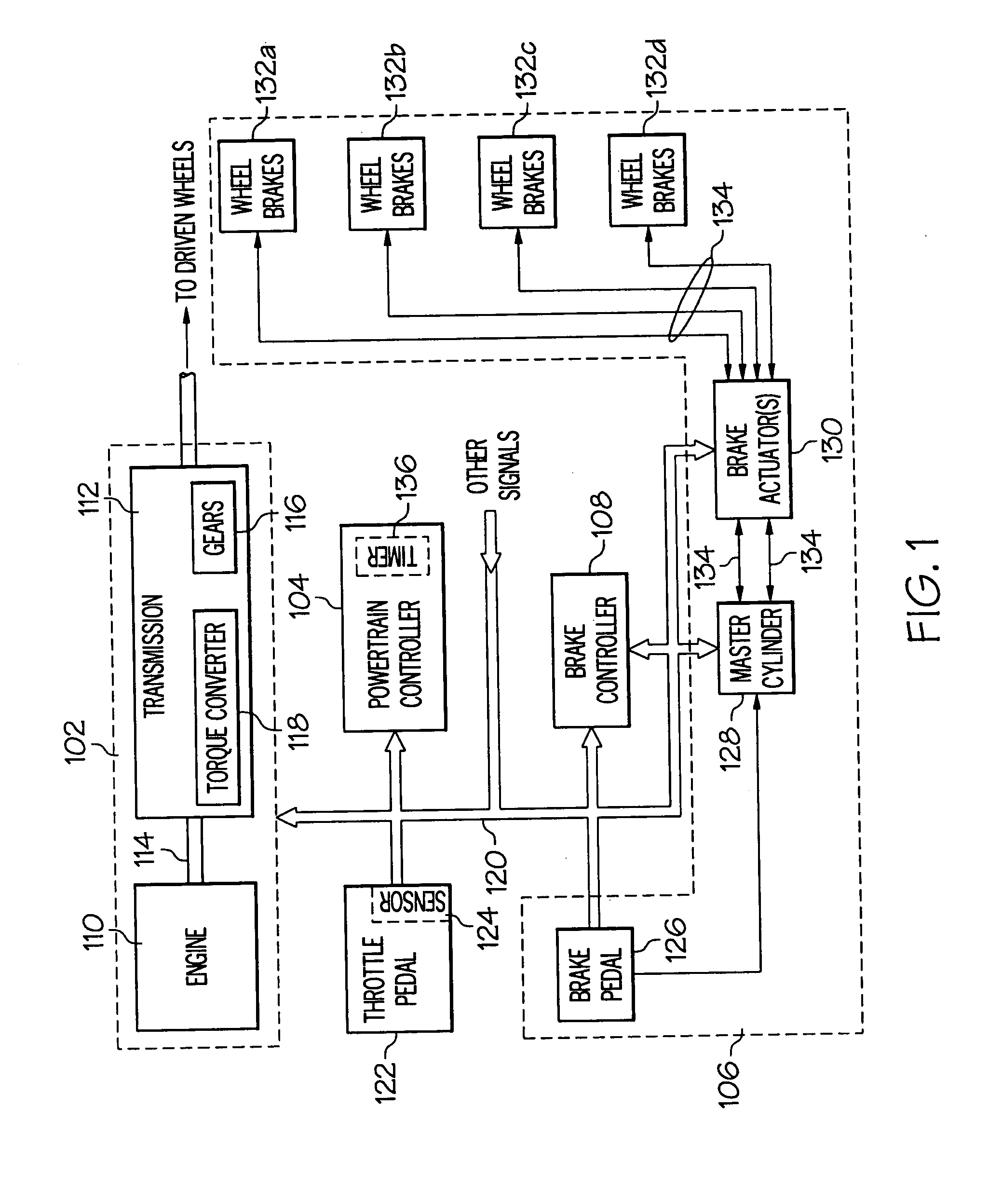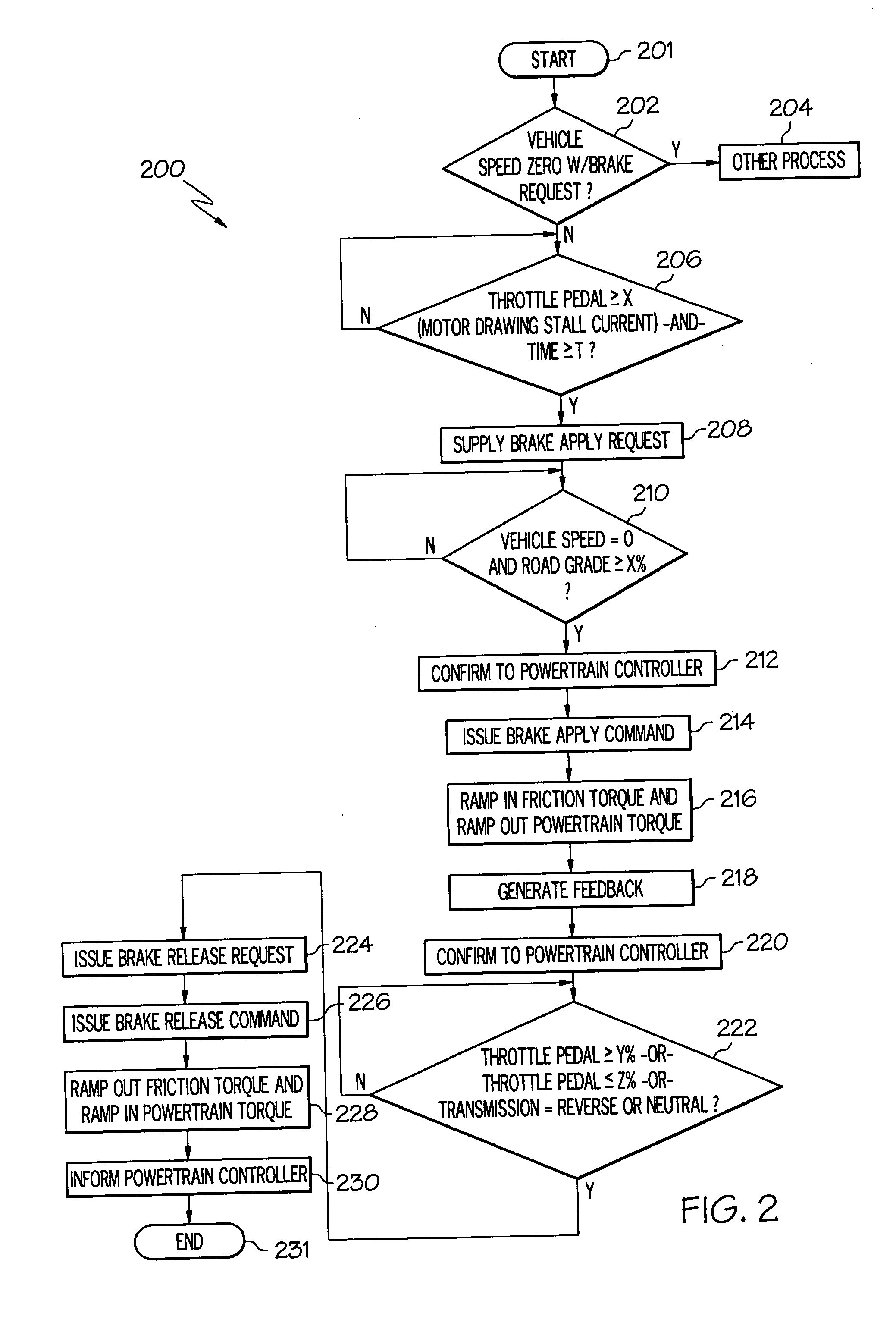System and method for maintaining a vehicle at zero speed on a graded surface
a technology of zero speed and graded surface, applied in the field of vehicle control, can solve the problems of excessive heat generation, damage to powertrain components, and reduce the lifetime of the powertrain and/or its components
- Summary
- Abstract
- Description
- Claims
- Application Information
AI Technical Summary
Benefits of technology
Problems solved by technology
Method used
Image
Examples
Embodiment Construction
[0014] The following detailed description is merely exemplary in nature and is not intended to limit the invention or the application and uses of the invention. Furthermore, there is no intention to be bound by any theory presented in the preceding background or the following detailed description.
[0015] An exemplary embodiment of a vehicle system 100 is illustrated in FIG. 1. The vehicle system 100 includes a powertrain 102, a powertrain controller 104, a vehicle brake system 106, and a brake controller 108. The powertrain system 102 includes an engine 110 and a transmission 112. The engine 110 is the prime mover of the vehicle system 100 and generates the torque necessary to accelerate the vehicle system 100 to a desired velocity, and to maintain the vehicle at this desired velocity. It should be appreciated that the engine 110 may be any one of numerous engine designs including, but not limited to, any one of numerous diesel or internal combustion engine designs, any one of numer...
PUM
 Login to View More
Login to View More Abstract
Description
Claims
Application Information
 Login to View More
Login to View More - R&D
- Intellectual Property
- Life Sciences
- Materials
- Tech Scout
- Unparalleled Data Quality
- Higher Quality Content
- 60% Fewer Hallucinations
Browse by: Latest US Patents, China's latest patents, Technical Efficacy Thesaurus, Application Domain, Technology Topic, Popular Technical Reports.
© 2025 PatSnap. All rights reserved.Legal|Privacy policy|Modern Slavery Act Transparency Statement|Sitemap|About US| Contact US: help@patsnap.com



